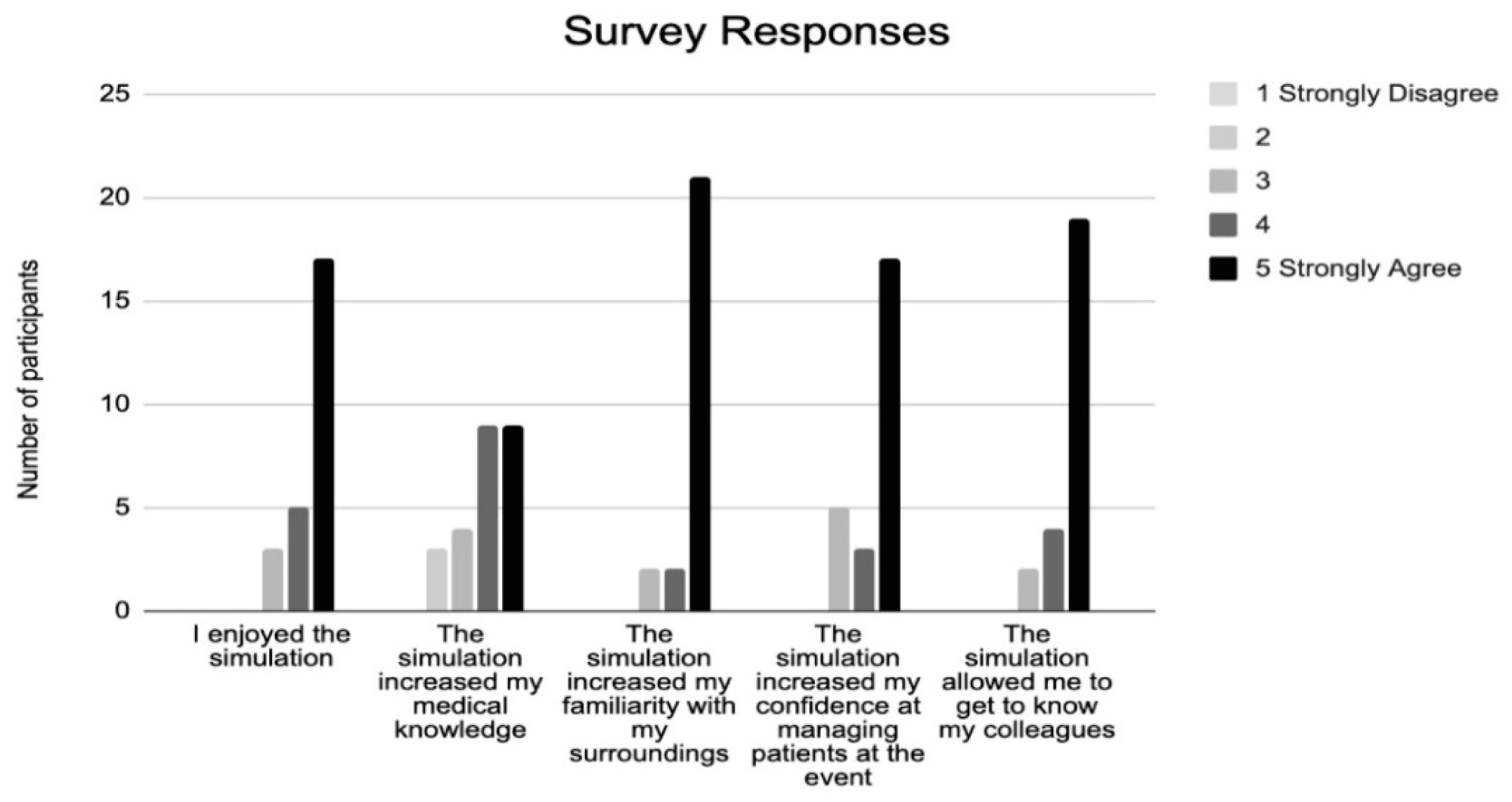
Medical care at sporting events presents unique challenges. Often, the event is at a novel venue and services operate from temporary structures by a team who may have not met. Our interprofessional team includes doctors, nurses, physiotherapists, and first aiders providing high-quality and safe care whilst learning from each other. British Medical Association guidance [1] on medical care at sporting events suggests specific courses and education prior to an event, but does not address learning or practice at the event itself. We think in-situ simulations are essential to encourage team bonding, interprofessional learning, and promote patient safety in unfamiliar environments. In-situ simulation has been demonstrated to achieve this in the Emergency Department [2]. We have extrapolated this to the sporting event medicine setting and use simulations as part of the briefing process at our events. We anecdotally found that simulations increased the confidence of staff and identified potential barriers to patient safety. Therefore, we formally explored the experiences of staff and identified the value of our innovation of running simulations specifically in the sporting medicine setting.
Between April and June 2022 participants were invited to provide feedback via an anonymous survey (gaining qualitative and quantitative data) after three simulations at sporting events. Simulations were facilitated and debriefed by an Emergency Medicine consultant with significant experience at sporting events and in simulation. The scenario was a collapsed athlete on the finish line of the event who required moving to the medical facility and then later into an ambulance. This allowed debriefing around clinical aspects as well as human factors and non-technical skills.
Twenty-five respondents provided feedback (Figure 1). Qualitative results demonstrate that our innovative approach is ‘invaluable’ and ‘promotes safe and effective working’. One participant stated that it ‘should be part of the team culture to run skills drills and simulations at all events’ suggesting that it has not been the case at other events. It was highlighted that the pre-simulation briefing could be improved.


In-situ simulation is useful and valued in the sporting event medicine setting. There has been largely positive feedback from participants showing that our simulations should continue (and be improved upon), and invites further study on the impact of simulation in this environment. We suggest that it should be part of the briefing of clinical staff at all sporting events.
1. British Medical Association, Board of Science. An information resource for doctors providing medical care at sporting events. January 2014. https://bma.primo.exlibrisgroup.com/discovery/delivery/44BMA_INST:44BMA/1248851970006796 [Accessed on 23/08/2022]
2. Patterson MD, Geis GL, Falcone RA, LeMaster T, Wears RL. In situ simulation: detection of safety threats and teamwork training in a high-risk emergency department. BMJ Quality & Safety. 2013;22(6):468–477.